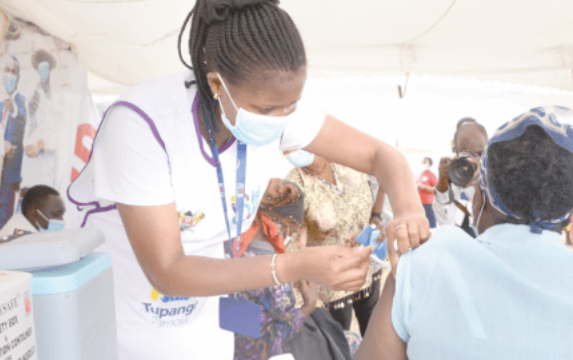A new report from the United Nations Environment Programme (UNEP) warns that if human activities affecting the environment continue at their current pace, infectious diseases could cause 12 times more deaths by 2050 compared to 2020.
The report highlights that land-use changes, deforestation, and certain agricultural practices disrupt ecosystems and increase human-wildlife interactions, creating conditions for zoonotic diseases—diseases caused by pathogens transferring from non-human hosts to humans.
It underscores the critical role of ecological factors in the emergence of zoonotic diseases and their impact on planetary health.
“Navigating New Horizons,” a global foresight report on planetary health and human well-being, emphasizes that these environmental activities are significantly increasing the risk of zoonotic disease emergence and spread.
“Recent studies indicate that if the increase in spill over events continues, estimated at between 5 and 8 per cent annually, the most common types of such pathogens are likely to result in 12 times the number of deaths in 2050 compared with 2020,” the report notes.
Further, it reveals that the melting of ancient microbes – such as bacteria and viruses – hidden in a permanently frozen layer on or under Earth’s surface unleashed is likely to be a catastrophic global health emergency.
“In recent decades, the Arctic – a polar region located at the northernmost part of Earth – has been warming much faster—four times in fact—than in the rest of the globe,” the report says, noting that the unprecedented warming has led to the thawing (the process of ice, snow, or another frozen substance becoming liquid or soft as a result of warming up) of vast areas, which scientists forewarn hold hidden dangers including massive quantities of methane, a potent greenhouse gas.
The UNEP report also highlights that the degradation of permafrost—a layer of permanently frozen soil or sediment—could lead to the release of toxic and radioactive materials into the environment, posing risks to both ecosystems and human health.
Recent outbreaks of diseases such as SARS, influenza A/H1N1, H5N1, MERS, Nipah virus, Ebola, and COVID-19 demonstrate the significant human and economic losses that can result from previously unknown or neglected pathogens causing epidemics.
Additionally, the report warns that if global temperatures rise between 2.1°C and 3.9°C by 2100, nearly a quarter of adults aged 69 and older will face dangerous heat extremes by 2050. This could put up to an additional 246 million older individuals—mainly in Africa and Asia—at risk, with severe implications for their physical and mental health.
The UNEP report also raises alarm over the potential for previously unknown or neglected pathogens to cause epidemics, highlighting an estimated 1.7 million undiscovered viruses within the global virome.
This virome includes all viruses found on or within humans, such as those causing acute, persistent, or latent infections, and endogenous retroviruses integrated into the human genome. This vast reservoir of undiscovered viruses, combined with the environmental changes discussed, intensifies concerns about future health risks.
The report identifies eight critical global shifts exacerbating the triple planetary crisis of climate change, biodiversity loss, and pollution. These shifts include the degradation of the natural world, rapid technological advancements like AI, competition for natural resources, increasing inequalities, and declining trust in institutions.
These interconnected crises are creating a “polycrisis,” where global challenges are amplifying and accelerating each other, with significant impacts on both human and planetary health.
In response to these findings, UNEP Executive Director Inger Andersen has urged governments worldwide to take immediate action.
“As the impacts of multiple crises intensify, now is the time to get ahead of the curve and protect ourselves from emerging challenges,” she said, pointing out that the rapid rate of change, uncertainty and technological developments being witnessed, against a backdrop of geopolitical turbulence, means any country can be thrown off course more easily and more often.
“By monitoring signals of change and using the foresight approach outlined in this report – including looking outside the traditional environmental space – the world can avoid repeating mistakes of the past and focus on solutions that can withstand future disruption,” she said.
Eighteen accompanying signals of change – identified by hundreds of global experts through regional and stakeholder consultations that included youth – offer a deeper glimpse into potential disruptions, both positive and negative, that the world must prepare for.
“Health care systems, air quality, water quality, and water-related diseases, infrastructure and service disruptions, labour productivity and wellbeing will also be highly affected,” the report highlights. These climate impacts will also have disproportionate effects on women.
The World Health Organization (WHO) has recently reported 891 human cases of avian influenza (H5N1) from 24 countries resulting from contact with live or dead birds or contaminated environments.
“These diseases may pose significant systematic global public health risks due to their potential to spread rapidly and unpredictably,” the reports points out.



